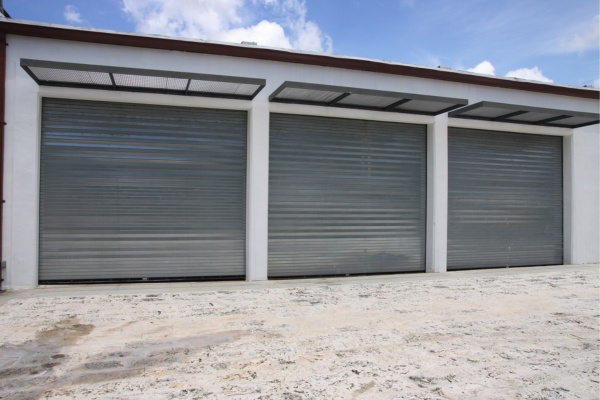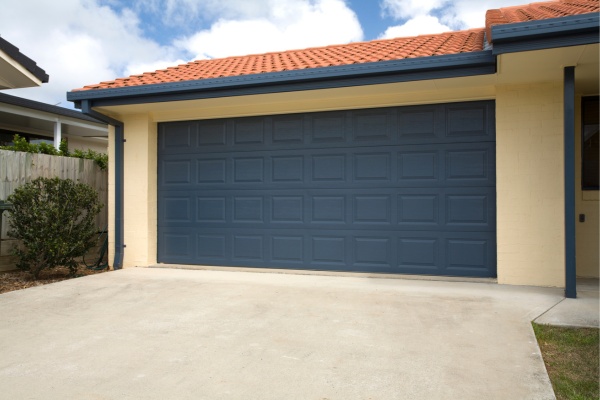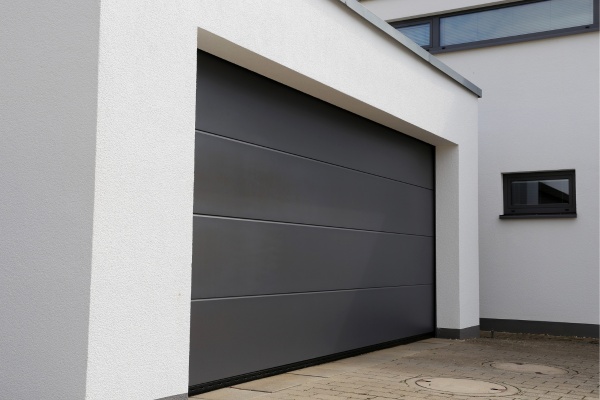The evolution of garage door repair reflects not only advancements in mechanical and electrical engineering but also society’s changing approach to home security, convenience, and maintenance. From humble wooden beginnings to modern smart systems, understanding the history of garage door repair reveals how innovations and challenges have shaped today’s industry.
When and How Did Garage Doors First Originate?
Garage doors first appeared in the early 20th century as homeowners and businesses sought effective ways to protect their vehicles and belongings. Early garage doors were primarily crafted from wood, reflecting the materials and architectural styles of the time. These wooden doors were often large, manual, hinged or sliding panels resembling barn doors. Their design was straightforward but functional, offering basic security and shelter.
These vintage wooden doors, sometimes called heritage or antique doors today, set the foundation for garage door technology. However, wood had limitations—it was prone to weather damage and required frequent maintenance, which initiated early repair practices centered around panel replacement and hinge adjustments.
With time, manufacturers transitioned from wooden doors to metal options like steel and aluminum, which provided greater durability, security, and reduced maintenance needs. This shift drove the development of new door mechanisms and repair techniques that focused on the properties of these metals and the evolving styles from plain panels to more decorative designs.

How Did Garage Door Repair Develop Alongside Door Technology?
As garage doors evolved from simple wooden slabs to sectional doors with multiple interconnected panels, the complexity of repair also grew. The introduction of spring-loaded counterbalance systems—namely torsion and extension springs—was a breakthrough that made doors easier to lift. However, these springs introduced new points of failure and repair challenges.
Repair technicians quickly began specializing in spring repair, cable repair, and the alignment of rollers and tracks. Hinges and panels required regular inspection and lubrication to ensure smooth operation. Precision became paramount because misaligned hardware could cause doors to jam or fall off their tracks, posing safety hazards.
Manufacturing innovations improved materials and hardware quality, but they also increased the variety of components needing repair expertise. Repair companies expanded their knowledge, offering services ranging from simple part replacements to complex https://jasperplace-ab-xa386.fotosdefrases.com/comprehensive-garage-door-repair-estimate-what-every-canadian-homeowner-should-know-in-2025 mechanisms involving springs, tracks, and cables.
What Role Did the Invention of Automatic Openers Play in Garage Door Repair History?
The mid-1900s introduced a monumental change with automatic garage door openers powered by electric motors. This innovation transformed the way people operated garage doors, adding layers of convenience and laying the groundwork for future technological integration.
Automatic openers incorporated remote controls, electrical wiring, and safety systems such as photoelectric sensors—features that significantly broadened garage door repair demands. Mechanical expertise merged with electrical troubleshooting skills as repair professionals were tasked with servicing motors, circuit boards, remotes, and safety sensors.
This era marked the beginning of a hybrid repair industry dealing not only with physical parts like springs and rollers but also with electronic components vital for functionality and security. Safety features like auto-reversal mechanisms further complicated repairs, requiring technicians to adapt and stay current with emerging standards.
What Are Common Garage Door Repair Issues Rooted in History?
Several repair problems have persisted throughout garage door history and remain common even with modern materials and designs:
- Broken Springs: Torsion or extension springs can snap due to metal fatigue, requiring precise and safe replacement. Off-Track Doors: Doors often come off their guides due to misaligned rollers or tracks, leading to jamming or unsafe operation. Jammed Doors: Obstacles, warped panels, or worn hardware can cause doors to stick or fail to open fully. Noisy Doors: Lack of lubrication on rollers, hinges, and tracks produces squeaks and grinding noises. Parts Replacement and Lubrication: Regular upkeep of cables, hinges, and rollers extends door lifespan and prevents costly repairs.
Despite material improvements, these issues underline the importance of timely maintenance and the continuing need for skilled garage door repair professionals.
How Have Safety and Energy Efficiency Influenced Garage Door Repair Trends?
Building codes and safety standards have evolved significantly, reflecting growing concerns for user safety and energy conservation. Modern garage door repairs must often address safety sensors—the photoelectric beams that detect obstructions and reverse door movement to prevent injury. Additionally, repairs now include calibrating auto-reverse functions and inspecting mounting hardware for secure attachment.
Energy efficiency has become equally important. Insulated garage doors equipped with weatherstripping reduce heat loss, improve soundproofing, and enhance security. Repairs for these doors involve maintaining insulation integrity and replacing weatherstripping to preserve thermal performance.
These factors have led to more comprehensive repair protocols. Repair companies must balance traditional mechanical fixes with advanced inspections and updates to meet current standards, thereby increasing the scope and costs associated with garage door servicing.
How Do DIY Garage Door Repairs Compare to Professional Services Through History?
Historically, many homeowners performed basic garage door maintenance, including lubrication and minor track adjustments. However, as doors incorporated complex mechanisms—especially springs under high tension and electrical openers—DIY repairs became riskier.
Spring replacements, opener repairs, and electrical troubleshooting generally require professional tools and training. Warranties offered by manufacturers frequently stipulate using certified technicians to maintain coverage, encouraging homeowners to seek expert help.
Today’s repair landscape balances DIY enthusiasm and professional intervention. Homeowners with moderate skills might handle simple tasks safely, but professional services remain crucial for ensuring safety, compliance, and warranty preservation.

What Are the Trends in Garage Door Repair and Maintenance Today?
Modern garage door repair reflects several industry trends:
- Smart Technology Integration: Repairs often encompass diagnostics on IoT-connected openers and security cameras integrated with garage doors. Eco-Friendly Materials: Use of sustainable composites and recycled metals is rising, affecting repair materials and methods. Restoration and Preservation: Specialists focus on restoring vintage and heritage doors using authentic parts and techniques. Custom Doors and Hardware: Custom fabrication requires tailored repair approaches and knowledge of unique designs. Lifespan Extension: Proactive maintenance plans, including regular inspections and lubrication, reduce long-term repair costs. Advanced Troubleshooting Tools: Use of computerized diagnostic equipment helps repair companies provide accurate assessments and warranties.
These developments make garage door repair a dynamic industry responsive to technological innovation, environmental concerns, and customer expectations.
Additional Insights: The Evolution of Garage Door Materials
Originally made from wood, garage doors transitioned through several materials to meet demands for durability and style:
- Wood: Classic and customizable but susceptible to warping and rot. Steel: Strong and low maintenance, steel doors became a staple in residential and commercial sectors. Aluminum: Lightweight and resistant to corrosion, preferred for contemporary and commercial designs. Composite Materials: Blending durability with insulation properties, composites represent modern engineering advances.
Each material change influenced repair techniques, tool requirements, and typical failure modes.
FAQ Section
Q1: When did garage door springs become a common repair issue?
Springs became standard in garage doors during the early to mid-1900s with the adoption of counterbalance systems. Since then, broken springs have remained one of the most frequent repair challenges due to metal fatigue.
Q2: Can I still repair antique garage doors myself?
While basic maintenance like cleaning and lubrication is possible, restoring or repairing antique doors often requires specialized parts and expertise to preserve historical integrity. Professional assistance is recommended.
Q3: How have automatic openers changed garage door repair frequency?
Automatic openers have introduced electrical components needing regular inspection, increasing repair types but reducing the physical strain on the doors themselves, sometimes lowering mechanical wear.

Q4: What safety features must be considered during garage door repairs?
Repairs must ensure auto-reverse functions are operational, safety sensors are correctly aligned, and mounting hardware is secure to comply with modern safety standards.
Q5: Are weatherstripping repairs important for older garage doors?
Yes, weatherstripping repairs prevent moisture ingress, improve energy efficiency, and extend the door’s usable life, making it an essential maintenance task.
In summary, the history of garage door repair intertwines deeply with the evolution of door materials, mechanisms, and safety technology. From early wooden doors to smart, insulated, and automated systems, each advancement has shaped repair techniques and challenges. Whether a homeowner, property manager, or professional, understanding this historical context helps make informed decisions about maintenance, repair, and upgrades, fostering safer and more efficient garage door operations today.